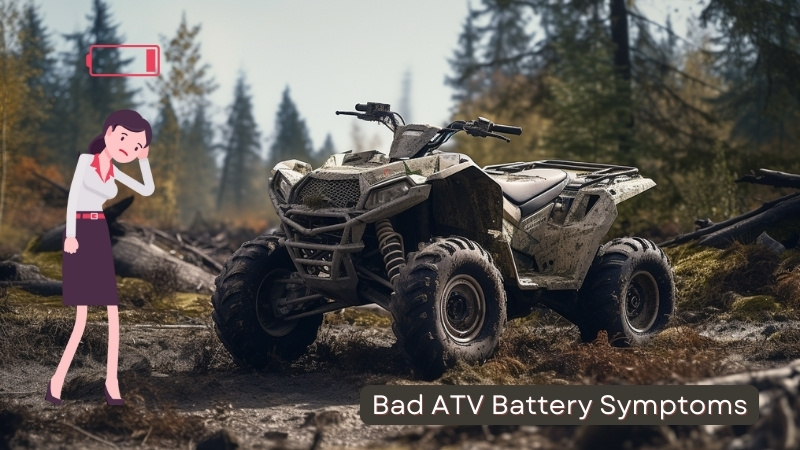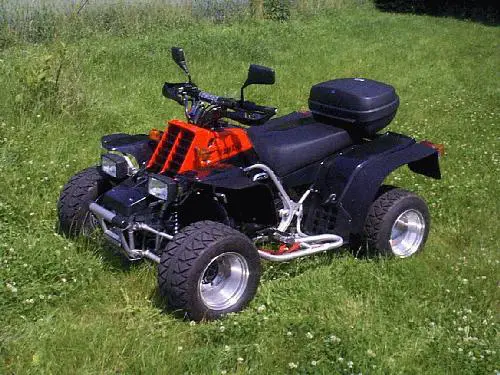Bad ATV Battery Symptoms 2025
The battery is one of the first components to look at if your ATV doesn’t start. Today, I’ll discuss some tips for maintaining your accumulator in top condition and the common symptoms of a bad ATV battery.
The main bad ATV battery symptoms to look out for are the inability to start the ATV, power loss, and ultimate engine death. Identifying the battery as the sole culprit can be challenging because these are frequent indications of other ATV issues.
To rule out a charging issue, mechanics and knowledgeable off-roaders frequently check the battery first because this is a typical problem for four-wheelers.
A visual inspection and a load test are typically used in this procedure to assess the voltage.
Low voltage when completely charged, along with external flaws like corroded terminals, holes in the case, or leaks, are all classic bad ATV battery symptoms.
Understanding the root cause of your battery problems is just as crucial as being aware of the symptoms of a bad ATV battery.
Read on to find out how to maintain a longer ATV battery life and the most frequent causes of ATV battery defects.
How can I tell if the Battery in my ATV is bad?
A voltage test is the most straightforward technique to find out if your ATV battery is bad. You may be sure you have a battery or charging system issue if an ATV has been losing power while out on the trail.
This should be your initial point of inspection to identify the source of your battery problem because batteries are known to degrade with time.
Start by taking a closer look at your battery. Check the outside of the battery for changes in the shape of your battery, corroded terminals, and even potential leaks.
There is still hope for a quick remedy if you find corroded terminals or leaks. However, the battery needs to be replaced if there is a bump caused by overcharging.
Your battery voltage can then be measured using a straightforward load test. You only need a multimeter and your battery charger. The steps you should take are as follows:
- After fully charging your battery, let it rest for about 6 to 12 hours to discharge any remaining charge.
- Measure your voltage by setting your multimeter, which is usually denoted by a “V.”
- Connect the multimeter’s leads to the battery’s corresponding terminals: the black lead to the negative (or ground) and the red lead to the positive terminal.
- Verify your voltage reading. Between 12.6V and 13.1V should be displayed on a healthy ATV battery. Your battery is entirely depleted if the multimeter reads anything less than 11.8V. Your battery is not retaining a proper charge if your readout is between 11.8V and 12.6V.
Why does the Battery in my four-wheeler keep dying?
The most common factors responsible for a four-wheeler battery failing are low fluid levels, sulfation, a malfunctioning voltage regulator, or a defective stator.
Your wiring not being done properly or the ground cable being rusted are two less likely causes.
You probably have a sulfation problem if you’ve owned your ATV battery for a while. This procedure cannot be avoided because it always occurs when your battery discharges while driving.
Your battery life is restricted because lead sulfate crystals accumulate inside of it over time.
Lead-acid battery owners also need to monitor the fluid levels in the cell ports. If your battery’s cover is removable, you can check to see if it has been leaking and top it out with distilled water to get it back to normal operation.
Suppose none of the mentioned possibilities apply to your circumstance. In that case, your ATV may be damaging your battery due to a poor charging mechanism. When this component of the charging mechanism malfunctions, the battery is also harmed.
On the other hand, a damaged battery may also be due to the stator. The voltage regulator makes sure that your battery receives the correct voltage from the stator in order for it to operate.
Will an ATV run poorly if the Battery is bad?
A bad battery frequently results in an ATV losing power while traveling and eventually shutting off entirely.
Therefore, the best course of action if you experience these bad ATV battery symptoms is to identify the issue and ultimately replace the accumulator so that you can ride without interruption.
You’ll be relieved to learn that four-wheelers driven by carburetors will be able to execute an emergency start on the path if the battery leaves you stranded.
But if you drive an electronic fuel injection (EFI) ATV, you’ll probably need a friend to jump-start it for you.
Just be sure to do it with the engine off if you’re using a car to collect the juice. If not, the voltage difference will damage your ATV battery.
How long can an ATV Battery last?
ATV batteries typically last between 3 and 5 years, based on the usage of the ATV, maintenance, and the model. The sulfation process will proceed much more swiftly for you if you are the kind of person who enjoys riding every single day.
On the other hand, leaving your battery depleted for extended periods if you seldom ever ride can be even more harmful.
The secret to extending your battery’s life is doing a few simple maintenance tasks.
Extreme weather, for instance, doesn’t appeal to ATV accumulators. The easiest way to prevent damaging your battery is to keep your ATV in a storage area, regardless of whether you reside in a very hot or very cold region.
Additionally, you could use a trickling charger to keep your battery fully charged when you won’t be using your four-wheeler for a while without overtaxing it.
Wrap-up
Utilizing these maintenance strategies will allow you to get the most out of your battery. But since every battery has a life span, you shouldn’t feel too reluctant to replace it when the occasion calls for it.
Suppose you’re frustrated by how fast your battery becomes excessively sulfated. In that case, you can check into more expensive AGM batteries, which are reputed to live longer than standard ATV accumulators.






